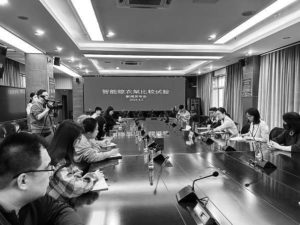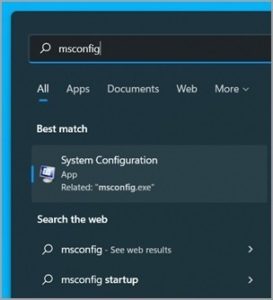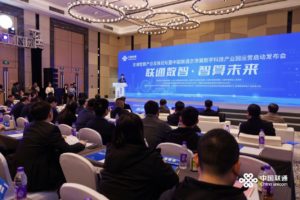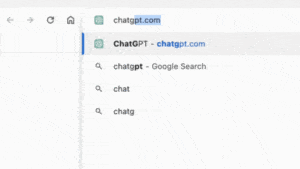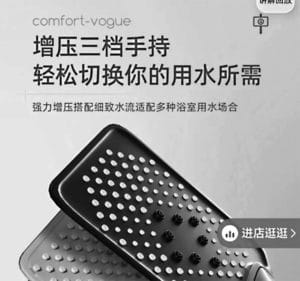How to choose an eye protection learning machine?Understanding “power consumption” is the key
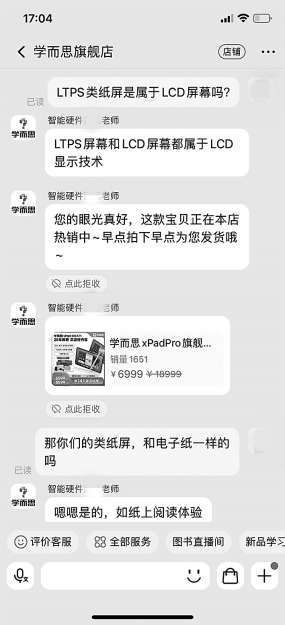
Figure 1: Xueersi’s new learning machine-type paper screen switching to three modes has become an important promotional selling point.
Figure 2: Xueersi flagship store customer service claims that paper-like screens and electronic paper have the same effect.
At present, the demand of students for learning machines is constantly increasing. For learning terminal products for students, in addition to the basic supporting content, parents are often also concerned about eye protection, and the material of the screen has a crucial impact on eye protection. Due to knowledge asymmetry, parents are particularly scratching their heads on how to choose an eye-protecting learning terminal product for their children. Recently, reporters from China Consumer News conducted an investigation.
Learning machine starts “eye protection competition”
In recent years, as a hardware product that meets the needs of students for online education, shipments of learning tablets have continued to grow, and the learning machine market has pressed the development accelerator button. The “Personal Consumption Education Intelligent Hardware Development Report (2023)” released by the Internet Society of China shows that the personal consumption education intelligent hardware market is expected to exceed 100 billion yuan this year, and the annual compound growth rate is expected to reach more than 15%.
The industry believes that with the release of the “double reduction” policy, off-campus training in subject areas has been restricted, and quality education has further developed. Tools and consumer education smart hardware with the ability to integrate knowledge point resources and provide quality education content are favored by parents and students.
Faced with the dazzling array of products on the market, in addition to high-quality educational resources, eye protection has also become an important criterion for consumers to purchase learning machines. Brands have launched an eye protection competition. The reporter learned that learning machine screens are mainly divided into LCD, OLED mode large color screens and electronic ink screens.
Gu Zhihua, director of Fudan University’s Advanced Materials Platform Flat Display Research Center, told a reporter from China Consumer News that electronic ink screens do not have ink, but a screen that displays like ink. Common electronic paper is also called electronic ink screen. Take the Amazon Kindle reader as an example. It uses electronic paper technology, and the screen display is as comfortable and soft as real paper.
“The ink screen uses reflective display technology, which is the same as how we read paper books. It does not require a backlight. It uses ambient light to hit the e-paper display screen, and then refracts the light to the viewer’s eyes. It is different from traditional paper or paper books. The visual principle of objects in life is the same.” Gu Zhihua explained that the brighter the ambient light source, the clearer the electronic paper is visible, achieving zero blue light and zero flicker, extending the time you can use your eyes.
Gu Zhihua said that learning tablets on the market usually use LCD displays, which require a backlight module or self-illumination to see images. This kind of screen emits blue light, of which short-wave blue light with a wavelength of 400-450 nanometers is harmful to human eyes. In addition, the penetrability of short-wave blue light is relatively strong. If your eyes are facing this type of screen for a long time, it will cause damage to the retinal pigment epithelium tissue and photoreceptor cells.
Zhang Zhiming, associate manager of the eNote business unit of Yuantai Technology, a world-renowned electronic paper display technology manufacturer, said in an interview with a reporter from China Consumer News that LCD and OLED are currently the more popular color screens, with long development cycles, large economic scale, and wide application range. . In comparison, e-paper or e-ink screens are relatively niche. Although they achieve the effect of eye protection, they have some inherent flaws, such as not being as colorful as LCD screens or having fast refresh speeds.
Li Gang, director and chief physician of the Optometry and Pediatric Ophthalmology Department of Beijing Aier Eye Hospital, said in an interview with a reporter from China Consumer News that LCD screens are a commonly used screen. Common or overuse can cause eye fatigue and dry eyes. and other discomfort symptoms.
Confusing “one-click switching”
So, is there an electronic product that combines the colorfulness and high refresh rate of an LCD screen with the eye-protection advantages of an ink screen?
It is understood that on December 19, 2023, Xueersi released the new second-generation learning machine xPad2 Pro series. The initial prices of the two products are 6,599 yuan and 8,599 yuan respectively. One of the highlights is that both new models use 11 layers of future paper moisturize the eye screen. According to reports, the new learning machine’s future paper eye screen can be manually switched between three display modes: a practice mode that restores black and white paper writing, a reading mode that restores color ink visual experience, and a original color mode that restores true colors.
The official flagship store of Xueersi also regards “eye protection large screen”, “eye protection magic” and “eye protection fully open, comprehensive protection” as its main selling points. A reporter from China Consumer News asked the customer service staff at the Xueersi flagship store whether the black and white and color modes of this learning machine can be switched with one click. The other party gave an affirmative answer, saying “you can choose the mode switching by yourself.”
On the official website of Xueersi, the product parameters of this learning machine are displayed, and the screen is an LTPS paper screen. The customer service staff explained that “LTPS screens and LCD screens both belong to LCD display technology.” The reporter asked, are paper-like screens the same as electronic paper? The customer service staff affirmed it, saying it was “like reading on paper.”
Parent “Mi Li’s Mom” told a reporter from China Consumer News that she didn’t understand the screen type and related parameters, so she often just read the brand introduction. “I bought this product for my children when it was new. Recently introduced as a new product, this learning machine has a paper-like screen, which is like reading and writing on paper. It can also switch between 3 different modes, allowing children to protect their eyes when watching the screen. I think Basically there won’t be much difference in the software and course settings. Although the price is on the higher side, I am more impressed by the promotion that it can protect my eyes better.” said Mi Li’s mother.
Regarding the question of whether an LCD screen can achieve the same eye protection effect as an electronic ink screen (electronic paper), Li Gang said that the eye protection effects of the two are different. If we simply consider it from the perspective of reading black and white text, electronic paper is more effective than paper books. Similar, with less physiological impact on the eyes.
It is not difficult to see that the above-mentioned promotion of “future paper” and “paper-like screen”, coupled with the explanations of customer service staff, can easily make parents like “Mi Li Mom” who only know the brand mistakenly think that the xPad2 Pro series of new learning machines can be used like electronic paper. Eye protection effect.
Is the paper-like screen a true electronic paper? Gu Zhihua told reporters that it cannot be considered that the LCD screen turned into black and white mode is electronic paper. Mode switching does not change the underlying logic of the display technology. Such promotion is suspected of stealing the concept. “The black and white mode of the LCD screen only switches the screen color from color to black and white. It can be compared to changing from a color TV to a black and white TV. The light-emitting principle of the screen does not change, and the screen will still emit direct light. It can be used for a long time It can easily lead to eye fatigue,” Gu Zhihua said.
“This product is still essentially an LCD screen.” Zhang Zhiming explained that it is technically very easy to switch between black and white and color screens with one click. As long as the color signal is removed, it can be turned into a black and white screen. The technical threshold is not high. It is undeniable that changing the LCD screen into a low blue light screen is the right direction. For example, correcting the contrast, low color, low brightness, etc. will have a soothing effect on the eyes. It makes the display less glaring to some extent. “Currently, some tablets are also undergoing anti-glare treatment to reduce external glare interference, but this does not mean that they have the same eye protection effect as electronic paper. The two are fundamentally different in terms of technical principles.” Zhang Zhiming said.
Power consumption comparison is the key to distinguish
According to industry insiders, TüV Rheinland, an international testing and verification organization, began research on comfortable reading characteristics a few years ago. Based on the research, it developed a display effect characteristic evaluation system for paper-like display screens: PSI paper-like Index, combined with blue light and stroboscopic performance, to formulate a paper-like display standard.
Zhang Zhiming told reporters that the PSI paper index can be used as an important reference. Seven calculation factors are used as detection standards to use scientific methods to detect how paper-like the display is. The average LCD screen scores below 50 points. But because it is not a mandatory standard, LCD screen manufacturers often do not carry out paper-like certification.
The reporter learned that brands such as Hanwang learning notebooks and Xiaoyuan training machines have already used electronic ink screen displays. Apart from the technical differences, what are the other differences between LCD screens and electronic paper?
Zhang Zhiming said that there is also a big difference in cost between electronic paper and large color screens. E-paper is a niche market, accounting for only 1% of the market share, and the economic scale of LCD screens is huge. For now, the cost of e-paper is much higher than that of LCD screens, but in the future, as users’ understanding of e-paper continues to deepen and market penetration continues to increase, the cost is expected to drop significantly.
What should consumers pay attention to when purchasing learning machine screens for their children? How to distinguish between electronic paper and LCD screens? Zhang Zhiming said that in addition to scientific certification, it is difficult for ordinary consumers to distinguish between the two. Only through actual use and comparison will they have a more obvious feeling.
Gu Zhihua said that during use, the power consumption of ordinary screens and e-paper is very obvious. The power consumption of ordinary screens is much higher than that of e-paper. This is the most important reference basis. The key to eye protection lies in screen luminescence and screen flickering. If the screen is constantly refreshed, the human eye will be stimulated and it will be difficult to achieve the eye protection effect.
(The pictures in this article are all data pictures)

